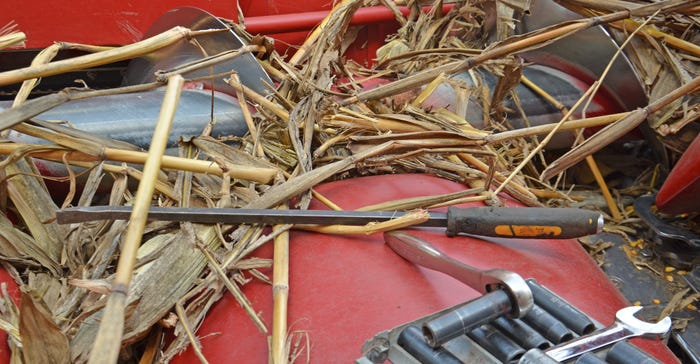
Perhaps one of the toughest calls in farming is knowing when to replace key parts on equipment before the season starts. When is wear enough that the part might fail or no longer function properly?
Whether you’re getting ready for planting, spraying or harvesting, you can face those decisions. Here is a real-life example based on the 2021 harvest season:
This operator believed he could get one more season out of his gathering chains and sprockets on the corn head. Preseason inspection confirmed they were showing wear, but they still seemed sound and serviceable. Why spend more money if you can get another season from those parts?
It’s good logic, but it all changed when he encountered tough conditions during harvest. In this case, it was lodged corn, especially where stands were thicker.
“We saw weak stalks, cannibalization and stalk rots in many fields in 2021,” says Dave Nanda, director of genetics for Seed Genetics Direct. “Lodging became an issue at harvest in many of those fields. That makes harvest more difficult.”
When the operator did his preseason combine prep, it still wasn’t clear how much lodging might be a factor. A near-record-setting wet October delayed harvest, giving more stalks time to become infected and exposing the field to more storms.
In this case, a gathering chain flipped off the sprocket when wads of down corn fed into the head all at once. Close inspection showed the chain was near breaking. One link was stretching apart. Instead of risking it flying apart, the operator shut down and called his dealer. While his normal location didn’t have what he needed, another store in the same dealer network did.
Within an hour and a half, his partner was back with parts, and he had the old parts removed. He replaced the front sprocket on that row as well. The dealership didn’t have enough chains and sprockets on hand to go across the entire head, but they had enough to fix this row and give him one set of spares. He was up and running with only two hours of downtime.
Should he have replaced chains and sprockets before the season? Not knowing tough conditions would follow, he likely made the most economical decision. But those are the tough calls!
About the Author(s)
You May Also Like




